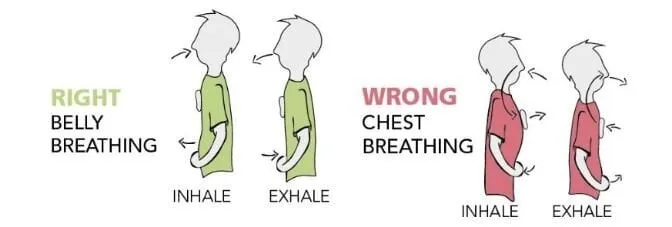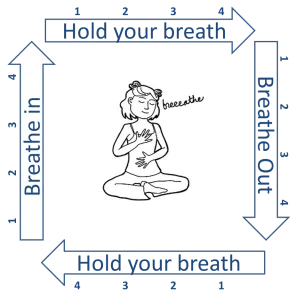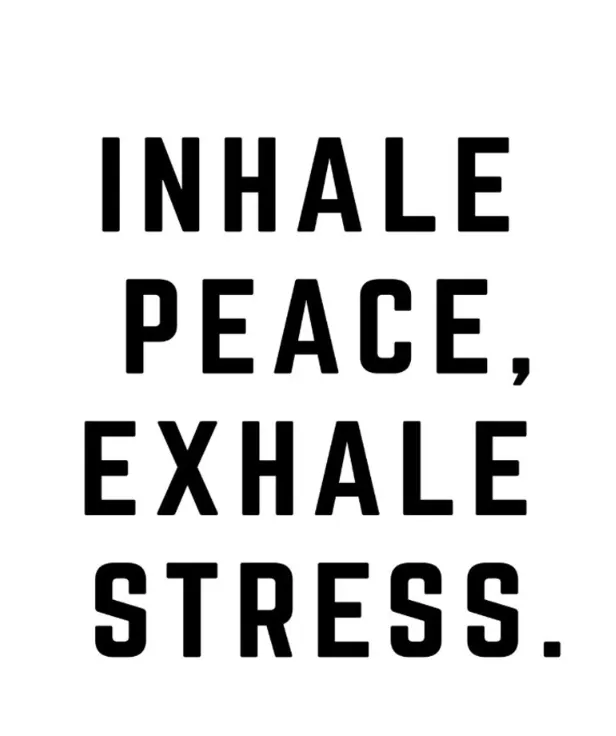3 Deep Breathing Exercises For Public Speaking
Breathing is perhaps the least talked about aspect of public speaking, but it is THE MOST IMPORTANT.
That's right, all caps.
Believe it or not, many speakers hold their breath when they are scared. The biggest giveaway is a squeaky voice. If 30-year-olds sound like they're going through puberty then it's a breathing problem.
Public Speaking Deep Breathing Exercise 1: Breath Through Your Diaphragm.
Seriously, right now, take a deep breath through your belly. One... big...deep... breath... in... and... out.
Now, you might think everybody would do it once in a while but that's not true. One of the most talked about features of the Apple Watch is, as my friend exclaims, "It even reminds me to breathe!"
I'm like, whaaaaaaat?

Public Speaking Breathing Exercise 2: Four Squared
This breathing exercise is good for speakers dealing with anxiety. I believe it's called four squared.
Breathe in for a count of 4.
Hold your breath for a count of 4.
Breathe out for a count of 4.
Hold your breath for a count of 4.
Repeat.

Hold up, I see online that people also count to 5. You decide.
I'm sure you're aware of the fact that when you breathe out and hold your breath your heart naturally slows down.
When your heart slows down, your brain calms down and the panic button in your brain called the amygdala stops firing off like an alarm.
When the amygdala is in check the frontal lobes are able to regain conscious decision making and anxiety can be controlled.
Of course, it takes time and practice to control speaking anxiety, and I know firsthand that many times you can't control speaking anxiety.
I've done hundreds of breathing exercises and still panicked before speaking engagements.
The real truth is that the only way to get beyond that anxiety is through speaking experience. I'm talking about having over 1,000 speeches of experience. Most people (including Toastmasters and Rotary members) will never perform 1,000 speeches.
Every time someone tells me they get anxious when speaking I ask how many speeches they've done.
Most people respond with a number of 10 speeches or less.
One of my favourite comments from Google reviews is from Jayney who said, "Devin has a lot of knowledge and tips, but he also knows how to make a room of nervous people feel completely comfortable, which is definitely not a skill you can teach someone. He is such a pleasure to work with and I would recommend his training to everyone. I learnt so much from him and his course."
I can honestly say that it wasn't always that way for me; in fact, In the past, I've been very uncomfortable and had very awkward experiences when the audience was nervous. I used to get anxious when talking to cold audiences, but now... experience.
That said, perfect practicing breathing is the BEST way to get through the tough times.

Public Speaking Breathing Exercise 3: Pace Counting
Take a deep breath through your nose using your belly, and as you breathe out focus on belly breathing as you count to 10. When you get to 10 make sure you are out of breath.
Now, breathe in again and this time count to 20. Speak at a steady pace and make sure you use all your breath.
Do the exercise again and count to 30, 40, and finally 50.
Can you count at the same pace for each number?
This is a great exercise to do while you're walking. It's easy, nobody knows you're doing it and it'll help pace your speaking speeds.
When you are walking or in the shower practice this exercise.
How will it pay off?
When you are in front of an audience, you want your breathing to be paced like that of a saxophone player. Sometimes you want to breathe fast and get that story out, sometimes you want to breathe slowly for the melody. Incorporating purposeful songs like breathing while you speak will unconsciously put you in control.
Every speaker will tell you the importance of vocal variety, and proper breathing will get you there.
**update, I used to be able to count to 10,20,30,40,50, but when I made the video I couldn't even do 30!! hahaha, I guess I'm out of practice but I've moved on to new exercises.
To conclude this talk: I've reiterated the importance of diaphragm breathing, given you the 4 squared technique, and challenged you to pace your breathing by breathing in and pacing your counting from 10 to 50.
Heck, you can count as high as you want, it's good practice.
The other question people often ask me is, "How do you control your breathing while public speaking?"
Great question, you're definitely not thinking about breathing while your speaking. My suggestion is to practice when you're not speaking. Practice before falling asleep, while sitting in the car, walking, and you name it. Practice on your own and I guarantee that when you speak it'll happen naturally.
Also, I'm going to be writing a series of blogs on the Paraluiguistic skills of public speaking. Basically, that means everything except the words you use. We're going to talk about facial gestures, hand movements, body language, tonality, and tricks and tells that add value to your message.
The bottom line is that you can have the best words written on paper, but if you can't deliver them with passion and purpose then those words mean nothing.
Stick around as we take a walk down the road looking at the Art Of Delivery.
